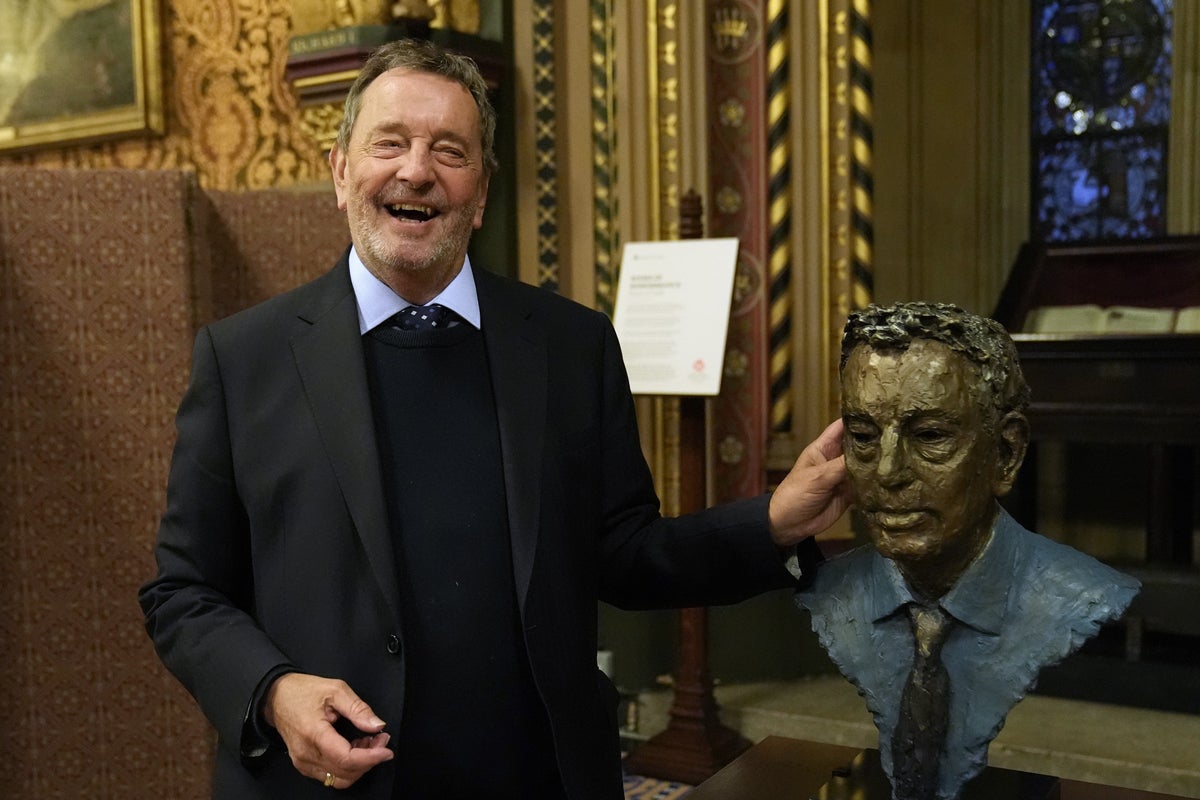
Blind and partially-sighted people face “a major problem in terms of access to work”, David Blunkett has said.
The former home secretary called on employers to “for God’s sake, give them a chance”, as he said “things have changed for the better” but “not enough” during his near-six decades in public life.
He spoke to the PA news agency in the House of Lords’ Royal Gallery, where a bust of himself is on display until December 16.
Frances Segelman completed the sculpture during a two-hour “speed sculpting” event three years ago in 2022, in front of an audience, before it was cast in bronze.
It is tactile, so peers and visitors are invited to touch it.
Ms Segelman and Lord Blunkett are both vice presidents of the charity Fight for Sight.
Lord Blunkett, who is blind, said it was a “privilege, really, to have the bust constructed by such a great sculptor – it’s a privilege to have it displayed for the time being in the Royal Gallery”.
Previous sittings for Ms Segelman have included the late Queen Elizabeth II, Barry Humphries as Dame Edna, and Dame Judi Dench.
Lord Blunkett said: “It’s a combination of her talent and the ability to make this accessible and touchable, and to ensure that the Fight for Sight charity gets the purchase and the publicity, and that I don’t get too embarrassed by having a sculpture in the House of Lords.”
He added: “It has been said that the sculpture has moved more quickly than some of my colleagues in the House of Lords.”
The Labour peer later said: “I think over the almost 60 years that I’ve been in public life, in one form or another, things have changed for the better – not enough, but the advent of new technology has translated into transforming the lives of young people particularly in education, their access to information, and education’s much greater.
“There is greater awareness.
“We still have a major problem in terms of access to work, and people with any form of disability, including those who are blind and partially sighted, actually being given the chance of getting a job, just getting an interview and getting a hearing.
“And I think the message from me is, if I can do it, other people can do what they’re good at in their own field.
“And for God’s sake give them a chance.”
Lord Blunkett said “we’ve got to break down” the “mind-forged manacles” which William Blake described in his 18th-century poem London.
“And those mind-forged manacles are what other people put up as barriers and restraints on the life and equality and achievement of other people,” he said.
“And if what I do and what is happening in terms of unveiling the sculpture actually get that message across, then that’s all for the good.”
Ms Segelman said: “Every time I sculpt someone, I try to capture their spirit as well as their likeness, and Lord Blunkett’s strength and warmth came through from the very first moment.
“To see the finished bronze sculpture displayed in the House of Lords is truly special and I hope this sculpture allows people to feel the powerful energy and resilience that radiates from him.”
Fight for Sight chief executive Keith Valentine described the sculpture as “a powerful symbol of inclusion and accessibility”.
